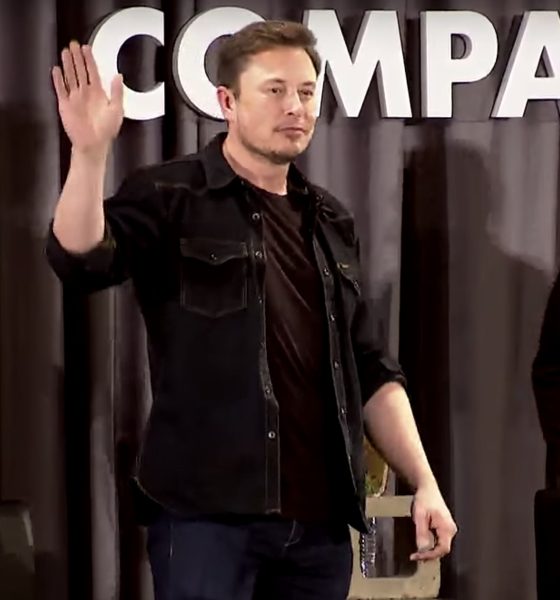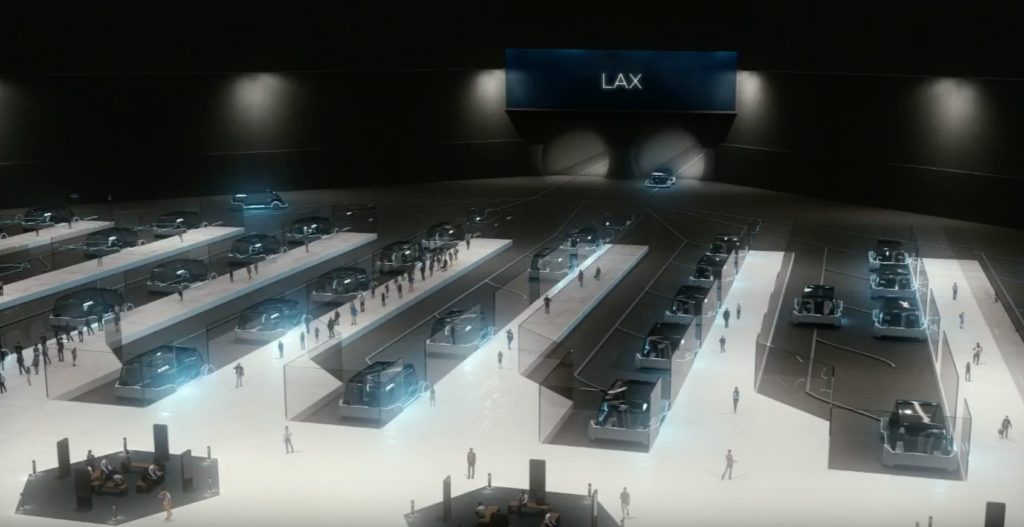

News
Key takeaways from Elon Musk’s Boring Company information session
Elon Musk provided a number of insights about The Boring Company’s Los Angeles tunneling initiatives in an information session held Thursday night at the Leo Baeck Temple. The event was led by Elon Musk and SpaceX Director Steve Davis, who was listed in the company’s recent SEC filing. Here are the key takeaways from information session.
- The Boring Co.’s tunnel boring machines are all-electric, making them 3x as powerful than conventional tunnel boring machines. Tesla batteries are used to power the machines, which eliminates the need for cabling.
- The Boring Company is aiming to drill and lay tunnel walls simultaneously while excavating dirt from the tunnel using battery-electric locomotives, which are equipped with two Model 3 motors.
- Musk and Davis also discussed the Boring Bricks, interlocking bricks made from tunneling rock. Musk noted that the Boring Bricks, which could be used for affordable housing, are better than cinder blocks. Egyptian model kits, featuring designs like the Temple of Horus, will also be sold.
- The Urban Loop transit — electric pods that are designed for commuters — will cost $1 per ticket. The speed of the Urban Loop will be 150 mph, and will enable travel from downtown Los Angeles to LAX airport in 8 minutes. Each pod can carry a maximum of 16 people.
- The Boring Co. tunnels will support Hyperloop technology as well. Just like the Urban Loop’s pods, Hyperloop pods will carry a maximum of 16 people. Hyperloop pods, however, will be much faster, traveling at 700 mph.
- The proof-of-concept tunnel under Sepulveda Blvd. in LA will not be used for public transportation. There will be no street closures, nor any tunneling beneath any homes or businesses. Residents won’t “see, feel, or hear” any of the startup’s activities. Utility lines will be untouched by the project as well.
- The Boring Company will be working closely with LA Metro. Musk stated that overall, “we want to connect with and supplement transport systems” that are already in place.
- Rocket technology is being used to develop and build the Boring Co.’s tunnels, considering that a number of SpaceX engineers are working on the tunneling startup’s projects.
- Line-Storm, the company’s second tunnel boring machine, features improvements over Godot, its first TBM. According to Musk, Godot is a conventional tunnel boring machine. Line-Storm, however, is “essentially a hybrid between conventional boring machine and the Proof-Rock, which is the fully Boring Company-designed machine.” Proof-Rock will be 10-15x faster than current TBMs. Line-storm will be at least 2x faster than a conventional boring machine.
- The Boring Company will do a full Environmental Impact Report. Musk noted that the company does not “expect any issues with the EIR.” Musk, stated, however, that the EIR will likely take some time to do.
- Elon Musk teased a party before the proof-of-concept tunnel’s launch.
The Boring Company came to fruition as Elon Musk’s way of alleviating the “soul-destroying” traffic that is prevalent in America’s streets. Just before the livestream, Elon Musk and LA Metro announced that the Boring Co.’s proof-of-concept tunneling project will be going ahead as planned. A statement from LA Metro reads as follows.
“Metro leadership and CEO Phil Washington had a great meeting today with the talented staff of the Boring Company. They will coordinate with us as they move ahead with their proof-of-concept tunnel under Sepulveda Boulevard to ensure it doesn’t interfere with our Sepulveda Transit Corridor rail project. We’ll be partners moving forward.”
Watch the Boring Company’s information session in the video below.

News
Tesla aims to combat common Full Self-Driving problem with new patent
Tesla writes in the patent that its autonomous and semi-autonomous vehicles are heavily reliant on camera systems to navigate and interact with their environment.

Tesla is aiming to combat a common Full Self-Driving problem with a new patent.
One issue with Tesla’s vision-based approach is that sunlight glare can become a troublesome element of everyday travel. Full Self-Driving is certainly an amazing technology, but there are still things Tesla is aiming to figure out with its development.
Unfortunately, it is extremely difficult to get around this issue, and even humans need ways to combat it when they’re driving, as we commonly use sunglasses or sun visors to give us better visibility.
Cameras obviously do not have these ways to fight sunglare, but a new patent Tesla recently had published aims to fight this through a “glare shield.”
Tesla writes in the patent that its autonomous and semi-autonomous vehicles are heavily reliant on camera systems to navigate and interact with their environment.

The ability to see surroundings is crucial for accurate performance, and glare is one element of interference that has yet to be confronted.
Tesla described the patent, which will utilize “a textured surface composed of an array of micro-cones, or cone-shaped formations, which serve to scatter incident light in various directions, thereby reducing glare and improving camera vision.”

The patent was first spotted by Not a Tesla App.
The design of the micro-cones is the first element of the puzzle to fight the excess glare. The patent says they are “optimized in size, angle, and orientation to minimize Total Hemispherical Reflectance (THR) and reflection penalty, enhancing the camera’s ability to accurately interpret visual data.”
Additionally, there is an electromechanical system for dynamic orientation adjustment, which will allow the micro-cones to move based on the angle of external light sources.
This is not the only thing Tesla is mulling to resolve issues with sunlight glare, as it has also worked on two other ways to combat the problem. One thing the company has discussed is a direct photon count.
CEO Elon Musk said during the Q2 Earnings Call:
“We use an approach which is direct photon count. When you see a processed image, so the image that goes from the sort of photon counter — the silicon photon counter — that then goes through a digital signal processor or image signal processor, that’s normally what happens. And then the image that you see looks all washed out, because if you point the camera at the sun, the post-processing of the photon counting washes things out.”
Future Hardware iterations, like Hardware 5 and Hardware 6, could also integrate better solutions for the sunglare issue, such as neutral density filters or heated lenses, aiming to solve glare more effectively.
Elon Musk
Delaware Supreme Court reinstates Elon Musk’s 2018 Tesla CEO pay package
The unanimous decision criticized the prior total rescission as “improper and inequitable,” arguing that it left Musk uncompensated for six years of transformative leadership at Tesla.

The Delaware Supreme Court has overturned a lower court ruling, reinstating Elon Musk’s 2018 compensation package originally valued at $56 billion but now worth approximately $139 billion due to Tesla’s soaring stock price.
The unanimous decision criticized the prior total rescission as “improper and inequitable,” arguing that it left Musk uncompensated for six years of transformative leadership at Tesla. Musk quickly celebrated the outcome on X, stating that he felt “vindicated.” He also shared his gratitude to TSLA shareholders.
Delaware Supreme Court makes a decision
In a 49-page ruling Friday, the Delaware Supreme Court reversed Chancellor Kathaleen McCormick’s 2024 decision that voided the 2018 package over alleged board conflicts and inadequate shareholder disclosures. The high court acknowledged varying views on liability but agreed rescission was excessive, stating it “leaves Musk uncompensated for his time and efforts over a period of six years.”
The 2018 plan granted Musk options on about 304 million shares upon hitting aggressive milestones, all of which were achieved ahead of time. Shareholders overwhelmingly approved it initially in 2018 and ratified it once again in 2024 after the Delaware lower court struck it down. The case against Musk’s 2018 pay package was filed by plaintiff Richard Tornetta, who held just nine shares when the compensation plan was approved.
A hard-fought victory
As noted in a Reuters report, Tesla’s win avoids a potential $26 billion earnings hit from replacing the award at current prices. Tesla, now Texas-incorporated, had hedged with interim plans, including a November 2025 shareholder-approved package potentially worth $878 billion tied to Robotaxi and Optimus goals and other extremely aggressive operational milestones.
The saga surrounding Elon Musk’s 2018 pay package ultimately damaged Delaware’s corporate appeal, prompting a number of high-profile firms, such as Dropbox, Roblox, Trade Desk, and Coinbase, to follow Tesla’s exodus out of the state. What added more fuel to the issue was the fact that Tornetta’s legal team, following the lower court’s 2024 decision, demanded a fee request of more than $5.1 billion worth of TSLA stock, which was equal to an hourly rate of over $200,000.
Delaware Supreme Court Elon Musk 2018 Pay Package by Simon Alvarez
News
Tesla Cybercab tests are going on overdrive with production-ready units
Tesla is ramping its real-world tests of the Cybercab, with multiple sightings of the vehicle being reported across social media this week.

Tesla is ramping its real-world tests of the Cybercab, with multiple sightings of the autonomous two-seater being reported across social media this week. Based on videos of the vehicle that have been shared online, it appears that Cybercab tests are underway across multiple states.
Recent Cybercab sightings
Reports of Cybercab tests have ramped this week, with a vehicle that looked like a production-ready prototype being spotted at Apple’s Visitor Center in California. The vehicle in this sighting was interesting as it was equipped with a steering wheel. The vehicle also featured some changes to the design of its brake lights.
The Cybercab was also filmed testing at the Fremont factory’s test track, which also seemed to involve a vehicle that looked production-ready. This also seemed to be the case for a Cybercab that was spotted in Austin, Texas, which happened to be undergoing real-world tests. Overall, these sightings suggest that Cybercab testing is fully underway, and the vehicle is really moving towards production.
Production design all but finalized?
Recently, a near-production-ready Cybercab was showcased at Tesla’s Santana Row showroom in San Jose. The vehicle was equipped with frameless windows, dual windshield wipers, powered butterfly door struts, an extended front splitter, an updated lightbar, new wheel covers, and a license plate bracket. Interior updates include redesigned dash/door panels, refined seats with center cupholders, updated carpet, and what appeared to be improved legroom.
There seems to be a pretty good chance that the Cybercab’s design has been all but finalized, at least considering Elon Musk’s comments at the 2025 Annual Shareholder Meeting. During the event, Musk confirmed that the vehicle will enter production around April 2026, and its production targets will be quite ambitious.










